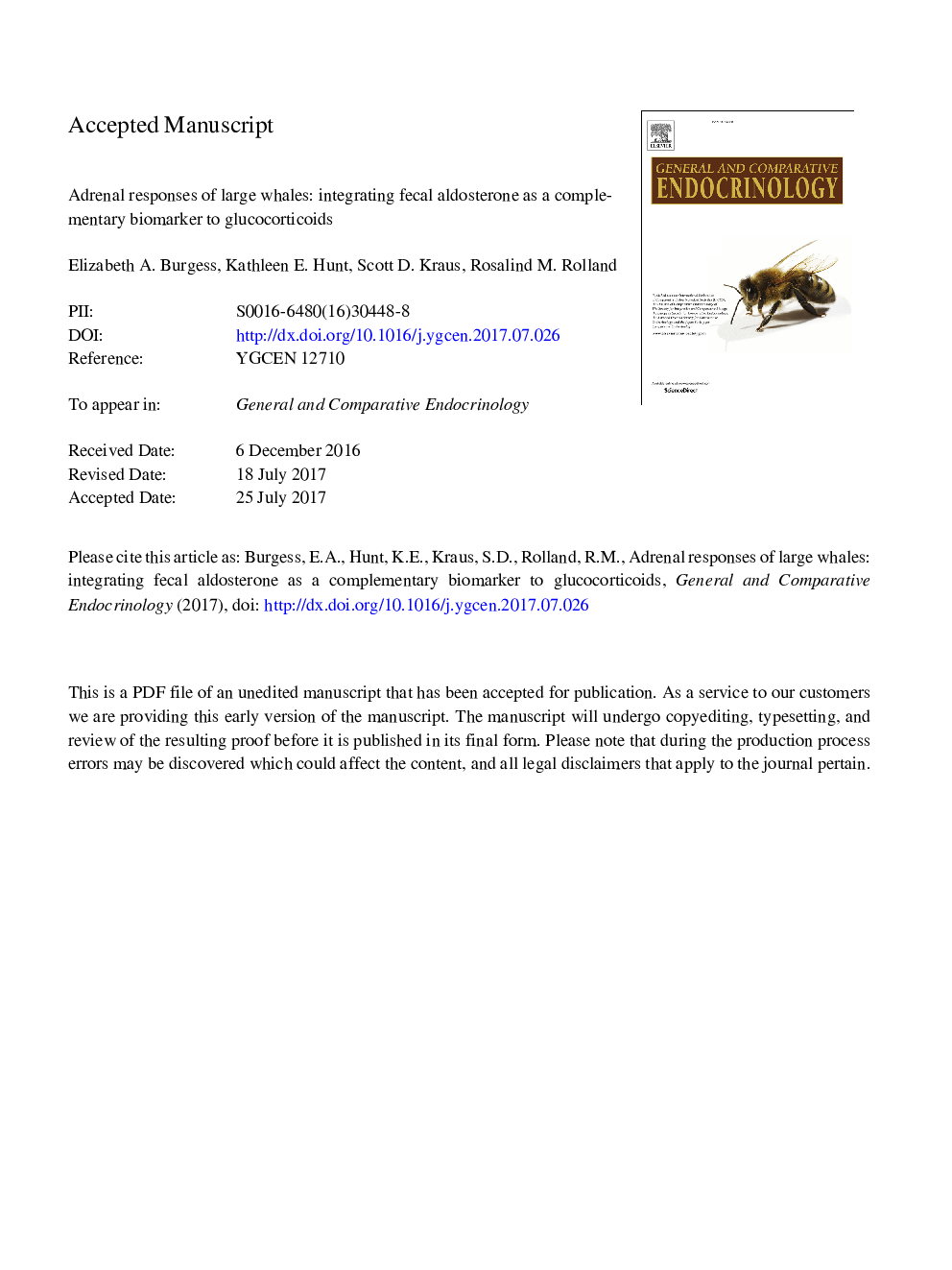| کد مقاله | کد نشریه | سال انتشار | مقاله انگلیسی | نسخه تمام متن |
|---|---|---|---|---|
| 5587562 | 1568855 | 2017 | 35 صفحه PDF | دانلود رایگان |
عنوان انگلیسی مقاله ISI
Adrenal responses of large whales: Integrating fecal aldosterone as a complementary biomarker to glucocorticoids
ترجمه فارسی عنوان
پاسخ های اضطراری نهنگ های بزرگ: ادغام آلدوسترون مدفوع به عنوان یک نشانگر مکمل برای گلوکوکورتیکئوئید
دانلود مقاله + سفارش ترجمه
دانلود مقاله ISI انگلیسی
رایگان برای ایرانیان
کلمات کلیدی
موضوعات مرتبط
علوم زیستی و بیوفناوری
بیوشیمی، ژنتیک و زیست شناسی مولکولی
علوم غدد
چکیده انگلیسی
Until now, physiological stress assessment of large whales has predominantly focused on adrenal glucocorticoid (GC) measures. Elevated GC concentrations in feces (fGC) are known to reflect stressful disturbances, such as fishing gear entanglement and human-generated underwater noise, in North Atlantic right whales (Eubalaena glacialis). However, there can be considerable variation in GC production as a function of sex and life history stage, which may confound the interpretation of fGC levels. Additionally, GC antibodies used in immunoassays can cross-react with other fecal metabolites (i.e., non-target steroids), potentially influencing fGC data. Here, aldosterone concentrations (fALD; aldosterone and related metabolites) were measured in fecal samples from right whales (total n = 315 samples), including samples from identified individuals of known life history (n = 82 individual whales), to evaluate its utility as a complementary biomarker to fGC for identifying adrenal activation. Concentrations of fALD were positively correlated with fGCs in right whales (r = 0.59, P < 0.001), suggesting concurrent secretion of these hormones by the adrenal gland. However, fALD levels were less influenced by concentrations of reproductive steroids in feces, minimizing the potential confounder of assay cross-reactivity in samples with highly skewed hormone ratios. Across different life history states for right whales, fALD concentrations showed similar patterns to those reported for fGC, with higher levels in pregnant females (35.9 ± 7.6 ng/g) followed by reproductively mature males (9.5 ± 0.9 ng/g) (P < 0.05), providing further evidence of elevated adrenal activation in these groups of whales. The addition of fALD measurement as a biomarker of adrenal activation may help distinguish between intrinsic and external causes of stress hormone elevations in large whales, as well as other free-living wildlife species, providing a more comprehensive approach for associating adrenal activation with specific natural and anthropogenic stressors.
ناشر
Database: Elsevier - ScienceDirect (ساینس دایرکت)
Journal: General and Comparative Endocrinology - Volume 252, 1 October 2017, Pages 103-110
Journal: General and Comparative Endocrinology - Volume 252, 1 October 2017, Pages 103-110
نویسندگان
Elizabeth A. Burgess, Kathleen E. Hunt, Scott D. Kraus, Rosalind M. Rolland,
